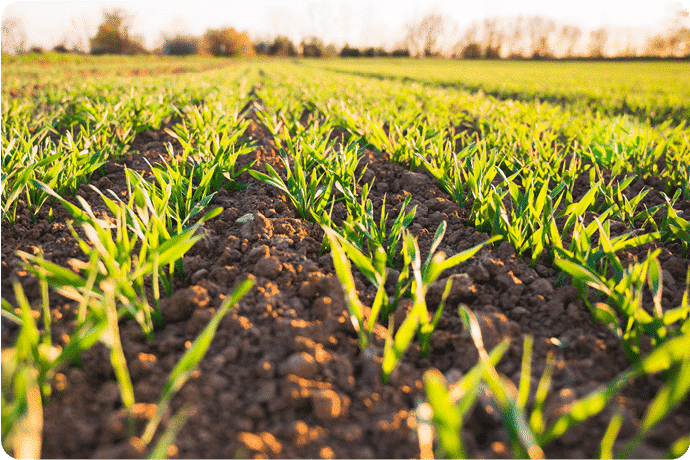Technologies in Agriculture: Smart Farming Techniques for Better Yields
Technologies in Agriculture: Smart Farming Techniques for Better Yields
Blog Article
Enhance Agricultural Performance With High-Quality Water Soluble Polymers
These polymers use a variety of advantages that can change standard farming approaches, from boosting water retention and efficiency to maximizing soil framework and nutrient distribution systems. By utilizing the power of innovative polymer remedies, farmers can potentially open brand-new pathways in the direction of attaining greater crop returns while reducing environmental influences.

Benefits of Water-Soluble Polymers
Water-soluble polymers offer a plethora of benefits in farming applications due to their enhanced water retention homes and ability to boost soil structure. Agriculture. These polymers, when included in the dirt, can considerably raise water holding capability, minimizing the frequency of irrigation required by crops. By forming a gel-like compound when mixed with water, water-soluble polymers create a reservoir that gradually releases moisture to plant roots, ensuring a much more constant water supply throughout completely dry spells
In addition, these polymers help in avoiding soil erosion by binding soil particles together, consequently improving soil structure and stability. Improved soil framework permits much better origin infiltration and aeration, promoting much healthier plant development and higher plant returns. Water-soluble polymers also aid in nutrient retention by lowering leaching, ensuring that crucial nutrients continue to be readily available to plants for a longer duration.
Improved Water Retention and Performance
Enhancing farming water retention and performance with the incorporation of innovative polymer innovations has actually come to be an extremely important focus in modern farming techniques. Water-soluble polymers play a vital role in improving dirt structure, improving water seepage, and minimizing water dissipation rates. By developing a slim movie on the dirt surface, these polymers aid to stop water overflow and enhance the soil's water-holding capability, making certain that plants have accessibility to a sufficient water.
Moreover, using high-quality water-soluble polymers can dramatically minimize the frequency of irrigation, as they enhance the soil's capacity to retain dampness for longer periods. This not only saves water but additionally decreases the power and labor prices connected with watering methods. Furthermore, improved water retention and performance result in much better nutrient uptake by plants, leading to boosted crop returns and overall agricultural efficiency.
Improved Nutrient Shipment Systems
Offered the significant impact of high-grade water-soluble polymers on enhancing water retention and effectiveness in agriculture, the emphasis now shifts towards maximizing nutrient distribution systems to even more enhance plant development and yield. Boosted nutrient delivery systems play a critical function in ensuring that plants receive the needed nutrients in a form that is conveniently offered for uptake, promoting their total wellness and performance. By integrating water-soluble polymers right into nutrient shipment systems, the performance of nutrient uptake by plants can be dramatically improved.
One trick benefit of making use of premium water-soluble polymers in nutrient delivery systems is their capability to manage the release of nutrients, making sure a constant and regulated supply to plants over an extensive duration (Agriculture). This controlled release mechanism assists stop nutrient leaching and runoff, thereby making the most of vitamins and mineral usage by crops and reducing ecological effect

Dirt Structure Optimization Methods
Maximizing dirt framework is vital you could try these out in modern-day agriculture for taking full advantage of crop yields and advertising sustainable land monitoring practices. Dirt structure optimization techniques play a critical role in making sure that dirt provides a suitable atmosphere for plant development. One vital strategy is the addition of raw material, such as garden compost or manure, which helps improve soil structure by enhancing its water-holding capacity and nutrient retention.
Additionally, practicing minimum husbandry or no-till farming pop over to these guys can protect against dirt compaction and advertise the advancement of a healthy and balanced dirt structure. Cover chopping is an additional efficient strategy that entails growing plants particularly to enhance the soil and safeguard, avoiding erosion and improving dirt framework.
In addition, executing crop rotation approaches can aid damage pest and illness cycles, while also boosting dirt structure through the varying origin structures of different crops. Overall, utilizing these dirt structure optimization methods can result in boosted farming efficiency, reduced environmental effect, and long-term sustainability in farming methods.
Lasting Solutions for Plant Returns

To address the difficulties of optimizing crop yields while advertising sustainable land administration techniques, exploring sustainable options ends up being crucial in modern farming. One sustainable option for improving plant returns is the use of accuracy farming techniques.
In addition, promoting crop rotation and cover chopping can assist maintain soil wellness, minimize erosion, and boost vitamins and mineral cycling, eventually contributing to higher yields with time. Integrated bug management techniques likewise play an essential role in lasting plant manufacturing by minimizing the reliance on chemical pesticides and promoting all-natural bug control approaches.
In addition, purchasing research study go to website and technology for creating drought-resistant plant ranges and climate-resilient farming practices can assist alleviate the effect of climate change on agriculture while making certain consistent returns despite ecological difficulties. By embracing these lasting options, farmers can accomplish higher crop yields while protecting the health of the land for future generations.
Verdict
To conclude, the use of high-quality water-soluble polymers in agriculture supplies various advantages such as enhanced water retention, boosted nutrient delivery systems, and optimized dirt framework. By implementing lasting services for crop returns, farmers can significantly boost agricultural efficiency and effectiveness. Agriculture. Water-soluble polymers offer a eco pleasant and cost-effective approach to improve the total performance of farming practices, causing far better end results for both farmers and the atmosphere
These polymers use a range of advantages that can transform conventional farming approaches, from improving water retention and performance to enhancing soil structure and nutrient shipment systems.Furthermore, these polymers help in preventing dirt disintegration by binding soil bits together, thereby boosting soil structure and stability. By creating a slim film on the soil surface area, these polymers help to avoid water overflow and enhance the soil's water-holding capacity, ensuring that plants have access to an appropriate water supply.
Soil framework optimization methods play a vital function in guaranteeing that soil gives a perfect setting for plant growth.In conclusion, the use of high-quality water-soluble polymers in agriculture offers numerous advantages such as better water retention, enhanced nutrient delivery systems, and optimized dirt structure.
Report this page